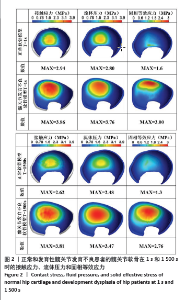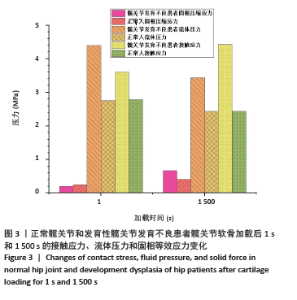[1] KIM HS, PARK JW, PARK JW, et al. Anterior and Lateral Femoroacetabular Excursion Angles Are Helpful for Assessing Femoroacetabular Impingement Syndrome: A Cross-Sectional Cohort Study. Arthroscopy. 2023;39(9):2012-2022.e1.
[2] HONG KB, LEE WS, KANG K, et al. Evaluation of lateral and anterior center-edge angles according to sex and anterior pelvic plane tilt angle: a three-dimensional quantitative analysis. J Orthop Surg Res. 2023; 18(1):280.
[3] VARUN M, OLIVER B, THOMAS D, et al. Developmental dysplasia of the hip is common in patients undergoing total hip arthroplasty under 50 years of age. SICOT-J. 2023;9:25-25.
[4] AITKEN HD, WESTERMANN RW, BARTSCHAT NI, et al. Effect of modeling femoral version and head-neck offset correction on computed contact mechanics in dysplastic hips treated with periacetabular osteotomy. J Biomech. 2022;141:111207.
[5] BORTULEV PI, BASKAEVA TV, VISSARIONOV SV, et al. Salter vs Pemberton: Comparative Radiologic Analysis of Changes in the Acetabulum and Pelvis After Surgical Correction in Children with Hip Dysplasia. Traumatol Orthop Russia. 2022;28(2):27-37.
[6] 沈彬. 发育性髋关节发育不良的保髋和置换手术:从儿童、青少年到成人的标准化阶梯治疗[J]. 中国修复重建外科杂志,2021, 35(12):1509-1512.
[7] 吴尽言, 陈晓东. 青少年及成人发育性髋关节发育不良保髋治疗最新研究进展[J]. 中国修复重建外科杂志,2021,35(12):1513-1518.
[8] 田昊, 许平, 鲁宁, 等. Bernese髋臼截骨术术前规划中骨盆建模对结果的影响[J]. 医用生物力学,2020,35(6):712-717.
[9] 张琳琳, 王旭义, 陈晓东. Bernese髋臼周围截骨术术前规划的有限元分析方法研究[J]. 生物医学工程学杂志,2016,33(3):455-460.
[10] 彭金海. 弧形髋臼截骨术治疗成人DDH的术前有限元规划及术后临床疗效观察[D]. 昆明:昆明医科大学,2021.
[11] 周甜丽, 张典, 吴继志, 等. 基于MRI的有限元建模和分析在髋臼周围截骨术中的应用[J]. 波谱学杂志,2023,40(4):397-409.
[12] BERGMANN G, DEURETZBACHER G, HELLER M, et al. Hip contact forces and gait patterns from routine activities. J Biomech. 2002;35(7):719-720.
[13] MENG Q, JIN Z, FISHER J, et al. Comparison between FEBio and Abaqus for biphasic contact problems. Proc Inst Mech Eng H. 2013;227(9): 1009-1019.
[14] LI J, STEWART TD, JIN Z, et al. The influence of size, clearance, cartilage properties, thickness and hemiarthroplasty on the contact mechanics of the hip joint with biphasic layers. J Biomech. 2013;46(10):1641-1647.
[15] LI J, HUA X, JONES AC, et al. The influence of the representation of collagen fibre organisation on the cartilage contact mechanics of the hip joint. J Biomech. 2016;49(9):1679-1685.
[16] MOSTAKHDEMIN M, NAND A, RAMEZANI M. Articular and Artificial Cartilage, Characteristics, Properties and Testing Approaches-A Review. Polymers. 2021;13(12):2000.
[17] BELLUZZI E, TODROS S, POZZUOLI A, et al. Human Cartilage Biomechanics: Experimental and Theoretical Approaches towards the Identification of Mechanical Properties in Healthy and Osteoarthritic Conditions. Processes. 2023;11(4): doi: 10.3390/pr11041014.
[18] LIN W, MENG Q, LI J, et al. The effect of highly inhomogeneous biphasic properties on mechanical behaviour of articular cartilage. Comput Methods Programs Biomed. 2021;206:106122.
[19] VAN HOUCKE J, AUDENAERT EA, ATKINS PR, et al. A Combined Geometric Morphometric and Discrete Element Modeling Approach for Hip Cartilage Contact Mechanics. Front Bioeng Biotechnol. 2020; 8:318.
[20] ANDERSON AE, PETERS CL, TUTTLE BD, et al. Subject-specific finite element model of the pelvis: development, validation and sensitivity studies. Biomech Eng. 2005;127(3):364-373.
[21] MENG Q, AN S, DAMION R A, et al. The effect of collagen fibril orientation on the biphasic mechanics of articular cartilage. J Mech Behav Biomed Mater. 2017;65:439-453.
[22] DONAHUE T, HULL ML, RASHID MM, et al. A finite element model of the human knee joint for the study of tibio-femoral contact. J Biomech Eng. 2002;124(3):273-280.
[23] 林伟健, 李俊言, 陈瑱贤, 等. 正常和早期膝骨关节炎的软骨生物力学研究[J]. 力学学报,2021,53(11):3147-3156.
[24] CHU L, HE Z, QU X, et al. Different subchondral trabecular bone microstructure and biomechanical properties between developmental dysplasia of the hip and primary osteoarthritis. J Orthop Translat. 2020; 22:50-57.
[25] YOSHIDA H, FAUST A, WILCKENS J, et al. Three-dimensional dynamic hip contact area and pressure distribution during activities of daily living. J Biomech. 2006;39(11):1996-2004.
[26] LI LP, BUSCHMANN MD, SHIRAZI-ADL A. A fibril reinforced nonhomogeneous poroelastic model for articular cartilage: inhomogeneous response in unconfined compression. J Biomech. 2000;33(12):1533-1541.
[27] BERNI M, MARCHIORI G, CASSIOLAS G, et al. Anisotropy and inhomogeneity of permeability and fibrous network response in the pars intermedia of the human lateral meniscus. Acta Biomater. 2021;135:393-402.
[28] INAMDAR SR, PRÉVOST S, TERRILL NJ, et al. Reversible changes in the 3D collagen fibril architecture during cyclic loading of healthy and degraded cartilage. Acta Biomater. 2021;136:314-326.
[29] PAWASKAR SS, INGHAM E, FISHER J, et al. Fluid load support and contact mechanics of hemiarthroplasty in the natural hip joint. Med Eng Phys. 2011;33(1):96-105.
[30] LI J. Development and validation of a finite-element musculoskeletal model incorporating a deformable contact model of the hip joint during gait. J Mech Behav Biomed Mater. 2021; 113:104136.
[31] INCZE-BARTHA Z, INCZE-BARTHA S, SZABÓ ZS, et al. Finite Element Analysis of Normal and Dysplastic Hip Joints in Children. J Pers Med. 2023;13(11):1593.
[32] ZHAO X, CHOSA E, TOTORIBE K, et al. Effect of periacetabular osteotomy for acetabular dysplasia clarified by three-dimensional finite element analysis. J Orthop Sci. 2010;15(5):632-640.
[33] JACOBSEN S, RØMER L, SØBALLE K. Degeneration in dysplastic hips. A computer tomography study. Skeletal Radiol. 2005;34(12):778-784.
[34] PAZ A, OROZCO GA, TANSKA P, et al. A novel knee joint model in FEBio with inhomogeneous fibril-reinforced biphasic cartilage simulating tissue mechanical responses during gait: data from the osteoarthritis initiative. Comput Methods Biomech Biomed Engin. 2023;26(11): 1353-1367. |



